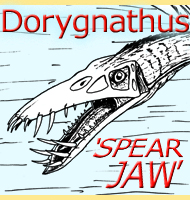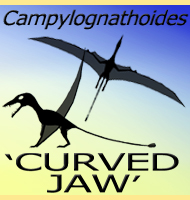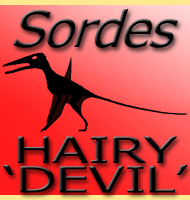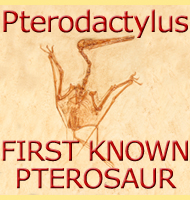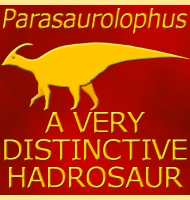


Bellubrunnus
Name:
Bellubrunnus
(Beautiful one of Brunn).
Phonetic: Bel-lu-brun-nus.
Named By: David W. E. Hone, Helmut
Tischlinger, Eberhard Frey and Martin R�per - 2012.
Classification: Chordata, Reptilia,
Pterosauria, Rhamphorhynchidae, Rhamphorhynchinae.
Species: B. rothgaengeri
(type).
Diet: Piscivore/Insectivore.
Size: Wingspan just under 30 centimetres
across, though certainly larger when adult.
Known locations: Germany, Brunn Quarry.
Time period: Kimmeridgian of the Jurassic.
Fossil representation: Articulated and complete
skeleton from a probably juvenile individual.
At
first glance the holotype specimen of Bellubrunnus
was considered to
have been an example of the famous pterosaur
genus Rhamphorhynchus,
though a closer study of the specimen soon came to the conclusion that
it actually represented a unique genus. The skull of Bellubrunnus
has
been noted for being proportionately short with large eyes, though
these are common proportions of juvenile pterosaurs that are still
growing. The lack of fusion in other areas of the skeleton also
supports the notion that the Bellubrunnus holotype
is of a juvenile.
This means that adult Bellubrunnus would have not
only been larger,
but probably had different facial proportions too.
The
teeth in the jaws of Bellubrunnus are long, thin
and splay
outwards to the sides and front of the mouth, a dental arrangement
that is quite common in rhamphorhynchid pterosaurs. These would have
increased the ‘catch area’ to make it easier to snatch prey like
fish from the water. It should be noted though, that while fish are
the most likely prey for Bellubrunnus, given the
form of teeth and
relationship to similar pterosaurs, large insects might have also
been taken on the wing. All together there were twenty-two pairs of
teeth in the mouth, though details about how many pairs were divided
between upper and lower jaws is still uncertain.
Bellubrunnus
is noted for having a very flexible tail thanks to the
short chevrons and zygapophyses of the caudal (tail) vertebrae.
This is notably different to many other rhamphorhyncoid genera which
had stiff tails held rigid by caudal vertebrae that overlapped one
other. However it would be interesting to see if the tail of
Bellubrunnus remained flexible in adult life or if
the caudal vertebrae
changed form to overlap each other and make the tail rigid like in
relative genera. The flexibility of the tail of the holotype specimen
of Bellubrunnus may be left over from time spent
developing in the
egg when the tail would need to be flexible enough to curl around the
interior of the egg.
The
wings of the Bellubrunnus holotype are also noted
as curving
backwards at the phalanx (analogous to your hand). This would
give Bellubrunnus an unusual shape of wing for a
pterosaur that may
have enhanced in flight manoeuvrability. However, it is still
unknown if adult Bellubrunnus had similar wing
proportions, or if
again the swept back wing was a throwback to developing in the egg.
Bellubrunnus
means beautiful one of Brunn and is a reference to the
Brunn limestone quarry where the holotype specimen was found. A
further interesting note is that the Brunn quarry is seen as being
similar to the famous Solnhofen Limestone quarry which has yielded
uncountable remains of pterosaurs and other creatures such as fish and
marine organisms. The type species name, B. rothgaengeri,
is in
honourof Monika Rothgaenger who found the holotype specimen.
Further reading
- A New Non-Pterodactyloid Pterosaur from the Late Jurassic of Southern
Germany. - PLoS ONE. 7 (7): e39312. - D. W. E. Hone, H. Tischlinger, E.
Frey & M. R�per [Leon Claessens (ed)] - 2012.
----------------------------------------------------------------------------
Random favourites
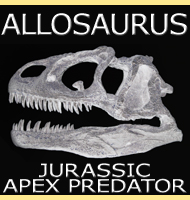 |
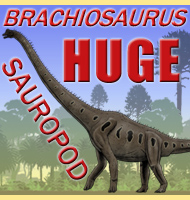 |
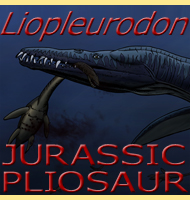 |
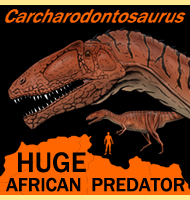 |
